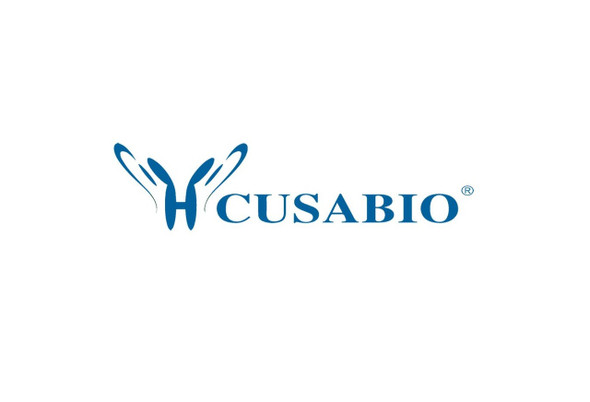Cusabio Human Recombinants
Recombinant Human Eukaryotic translation initiation factor 4E-binding protein 2 (EIF4EBP2) | CSB-YP007563HU
- SKU:
- CSB-YP007563HU
- Availability:
- 25 - 35 Working Days
Description
Recombinant Human Eukaryotic translation initiation factor 4E-binding protein 2 (EIF4EBP2) | CSB-YP007563HU | Cusabio
Alternative Name(s): 4E-BP2; 4EBP2; 4EBP2_HUMAN; eIF4E binding protein 2; eIF4E-binding protein 2; Eif4ebp2; Eukaryotic translation initiation factor 4E binding protein 1; Eukaryotic translation initiation factor 4E-binding protein 2; PHASII; phosphorylated; heat and acid stable regulated by insulin protein II
Gene Names: EIF4EBP2
Research Areas: Transcription
Organism: Homo sapiens (Human)
AA Sequence: MSSSAGSGHQPSQSRAIPTRTVAISDAAQLPHDYCTTPGGTLFSTTPGGTRIIYDRKFLLDRRNSPMAQTPPCHLPNIPGVTSPGTLIEDSKVEVNNLNNLNNHDRKHAVGDDAQFEMDI
Source: Yeast
Tag Info: N-terminal 6xHis-tagged
Expression Region: 1-120aa
Sequence Info: Full Length
MW: 14.9 kDa
Purity: Greater than 90% as determined by SDS-PAGE.
Relevance: Repressor of translation initiation involved in synaptic plasticity, learning and mory formation . Regulates EIF4E activity by preventing its assbly into the eIF4F complex: hypophosphorylated form of EIF4EBP2 competes with EIF4G1/EIF4G3 and strongly binds to EIF4E, leading to repress translation. In contrast, hyperphosphorylated form dissociates from EIF4E, allowing interaction between EIF4G1/EIF4G3 and EIF4E, leading to initiation of translation . EIF4EBP2 is enriched in brain and acts as a regulator of synapse activity and neuronal st cell renewal via its ability to repress translation initiation . Mediates the regulation of protein translation by hormones, growth factors and other stimuli that signal through the MAP kinase and mTORC1 pathways .
Reference: Insulin-dependent stimulation of protein synthesis by phosphorylation of a regulator of 5'-cap function.Pause A., Belsham G.J., Gingras A.-C., Donze O., Lin T.-A., Lawrence J.C. Jr., Sonenberg N.Nature 371:762-767(1994)
Storage: The shelf life is related to many factors, storage state, buffer ingredients, storage temperature and the stability of the protein itself. Generally, the shelf life of liquid form is 6 months at -20?/-80?. The shelf life of lyophilized form is 12 months at -20?/-80?.
Notes: Repeated freezing and thawing is not recommended. Store working aliquots at 4? for up to one week.
Function: Repressor of translation initiation involved in synaptic plasticity, learning and memory formation (By similarity). Regulates EIF4E activity by preventing its assembly into the eIF4F complex
Involvement in disease:
Subcellular Location:
Protein Families: EIF4E-binding protein family
Tissue Specificity:
Paythway:
Form: Liquid or Lyophilized powder
Buffer: If the delivery form is liquid, the default storage buffer is Tris/PBS-based buffer, 5%-50% glycerol. If the delivery form is lyophilized powder, the buffer before lyophilization is Tris/PBS-based buffer, 6% Trehalose, pH 8.0.
Reconstitution: We recommend that this vial be briefly centrifuged prior to opening to bring the contents to the bottom. Please reconstitute protein in deionized sterile water to a concentration of 0.1-1.0 mg/mL.We recommend to add 5-50% of glycerol (final concentration) and aliquot for long-term storage at -20?/-80?. Our default final concentration of glycerol is 50%. Customers could use it as reference.
Uniprot ID: Q13542
HGNC Database Link: HGNC
UniGene Database Link: UniGene
KEGG Database Link: KEGG
STRING Database Link: STRING
OMIM Database Link: OMIM









